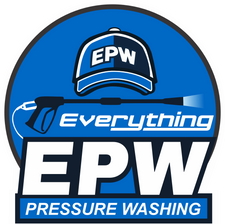 news
news
How Does a Pressure Washer Work?
Contents
Curious about how pressure washers operate? Dive into the intricacies of these powerful cleaning tools with us.
Understanding the Basics
A pressure washer works by using a motor or engine to drive a pump that forces water at high pressure through a nozzle. This high-pressure water stream is then directed onto surfaces to remove dirt, grime, mold, and other stubborn substances. The key components of a pressure washer include the water inlet, pump, electric motor or gas engine, high-pressure hose, and the nozzle. Understanding how these parts work together is essential to grasp the basics of pressure washer operation.
The water inlet connects the pressure washer to a water source, while the pump pressurizes the water. The electric motor or gas engine powers the pump to create the necessary pressure. The high-pressure hose delivers the pressurized water, and the nozzle controls the direction and width of the spray. This simple yet effective process is what makes pressure washers versatile and powerful tools for cleaning various surfaces.
When you pull the trigger on a pressure washer spray gun, you are allowing the pressurized water to flow through the wand and out of the nozzle. By adjusting the nozzle settings, you can change the pressure and pattern of the water spray to suit different cleaning tasks. Whether you’re cleaning your driveway, siding, or outdoor furniture, the pressure washer’s ability to adjust the spray makes it a flexible cleaning solution.
Pressure washers are available in different power ratings, typically measured in PSI (pounds per square inch) or GPM (gallons per minute). Higher PSI indicates greater pressure, while higher GPM means more water flow. Choosing the right pressure washer with the appropriate power rating for your cleaning needs ensures efficient and effective results without the risk of damaging surfaces.
Components and Functions
The main components of a pressure washer include the pump, motor or engine, hose, wand, nozzle, and detergent tank (in some models). The pump is the heart of the pressure washer, as it pressurizes the water for effective cleaning. Depending on the model, pressure washers can be powered by electricity or gas, each offering unique benefits in terms of mobility and power output.
The high-pressure hose connects the pump to the spray wand, allowing pressurized water to travel from the pump to the nozzle. The spray wand is where you attach different nozzles to adjust the water spray pattern. Nozzles come in various degrees, such as 0, 15, 25, and 40 degrees, with 0 degrees providing a pinpoint spray for tough stains, while wider angles cover larger areas at lower pressures.
Some pressure washers also feature a detergent tank or siphon system for applying cleaning solutions to surfaces. This addition helps in breaking down grime and dirt more effectively. Understanding the functions of each component equips you with the knowledge to operate and maintain your pressure washer for long-lasting performance.
In addition to the main components, pressure washers may have safety features like automatic shut-off systems to prevent overheating or damage. Regular maintenance, such as checking for leaks, inspecting hoses and nozzles, and ensuring proper storage, is crucial to prolonging the lifespan of your pressure washer and ensuring safe usage.
Operating Your Pressure Washer
Before starting your pressure washer, read the manufacturer’s instructions for specific guidelines on assembly, operation, and safety precautions. Begin by connecting the water supply, turning on the machine, and letting it run for a few minutes to prime the pump. Check the oil levels (if applicable) and fuel (for gas-powered models) before starting.
Once the pressure washer is primed and ready, adjust the nozzle to the desired spray pattern and pressure setting based on the surface you are cleaning. Start from a distance to test the pressure and gradually move closer as needed. Avoid spraying directly at delicate surfaces or electrical outlets to prevent damage or safety hazards.
When using detergent, follow the manufacturer’s guidelines for the correct ratio and application method. Apply the detergent from the bottom up, allowing it to dwell for a few minutes to loosen dirt and grime. Rinse thoroughly with clean water to reveal a sparkling clean surface.
After use, release any remaining pressure in the system, disconnect the water supply, and turn off the machine. Properly store your pressure washer in a dry, secure place away from extreme temperatures or moisture. Regularly inspect and clean the machine to prevent clogs and maintain optimal performance for future use.
Maintenance Tips for Longevity
To ensure your pressure washer operates smoothly, regularly check and clean the inlet filter to prevent clogs and maintain water flow. Inspect hoses for any signs of wear or damage, and replace them if necessary to prevent leaks or pressure loss. Clear debris from nozzles to maintain proper spray patterns and avoid uneven cleaning.
Schedule routine maintenance tasks such as changing oil, spark plugs, and air filters according to the manufacturer’s recommendations. Store your pressure washer in a protected environment to shield it from harsh weather conditions that could damage the components. Proper maintenance not only extends the lifespan of your pressure washer but also ensures consistent performance.
When storing your pressure washer for an extended period, be sure to properly winterize it to prevent freezing and damage. Drain any remaining water from the system, add a fuel stabilizer (if applicable), and protect the engine from corrosion. Following these maintenance tips will help you keep your pressure washer in top condition for years to come.
Keeping Your Pressure Washer in Prime Condition
To keep your pressure washer in top condition, follow our maintenance tips. A well-maintained pressure washer ensures optimal performance when you need it most.
